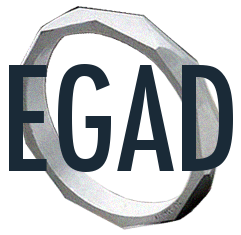Triangulating Data on Student Learning
![]()
Using multiple sources of data when documenting students’ learning is an effective way of validating initial analyses of a single piece of data.
1. Include opportunities for informal assessment, students’ self-reports of learning, and even unsolicited data from placement supervisors or employers.
Students’ performance in the classroom can become a data point if teachers adopt a habit of keeping session logs to record ways that students respond to instruction in different learning situations. Data gained through student focus groups or interviews may also provide an alternative perspective on how and what students are learning. Placement supervisors and employers are likely to be able to comment on integrated, authentic, practical learning.
2. Use more than one type of assessment when analyzing data
When you know what it is that you’re looking for in students’ learning, the more likely you are to want to gather data from different sources to bolster your claims about what they’ve learned. Looking at multiple sources of data on students’ learning is analogous to taking multiple snapshots of a single event – it provides a more complete picture of reality. Using data from multiple assessment sources enables teachers to more accurately determine students’ strengths and identify areas for improvement
3. Value all assessments not just major events
Any assessment activity that was worth having your students do is worth using as a data point.
4. Use the data gained from assessment to answer questions about authentic learning
Typically, authentic learning is described as learning that mimics the real-life knowledge and skills that are required in industry. Just as typically, questions about complex learning are unlikely to be fully answered using just one piece of data.
5. Look at data across time intervals
When looking at data on students’ learning over time, look for patterns and changes in performance and achievement in relation to the demands of the curriculum.
[expand title=”Learning Activity“]List the types of data you have already collected or have access to. What types of data are you missing (that is where are the gaps in your understanding of the strengths and limitations of your programs) and how might you access it?[/expand]
![]()
[expand title=”Other useful resources: “]
Assessing professional skills (DePaul University) [link]
Development of a scale to measure life-long learning (Kirby, Knapper, Lamon & Egnatoff) [pdf]
Assessing integrated learning creating rubrics [pdf]
Student-maintained portfolios e-portfolios [link]
Designing the right assignment
http://www.brookes.ac.uk/services/ocsld/resources/methods.html
http://aei.uoregon.edu/handouts/2004_bloom_polygon.pdf (note: Bloom’s taxonomy depicts learning as occurring in three distinct domains. The polygon deals only with cognitive learning. Integrated learning will require instructors to include elements of skill (psychomotor) and attitudinal (affective) development as part of assessment design.  (information on psychomotor and affective domains can be found at http://www.nwlink.com/~donclark/hrd/bloom.html
[/expand]
![]()
